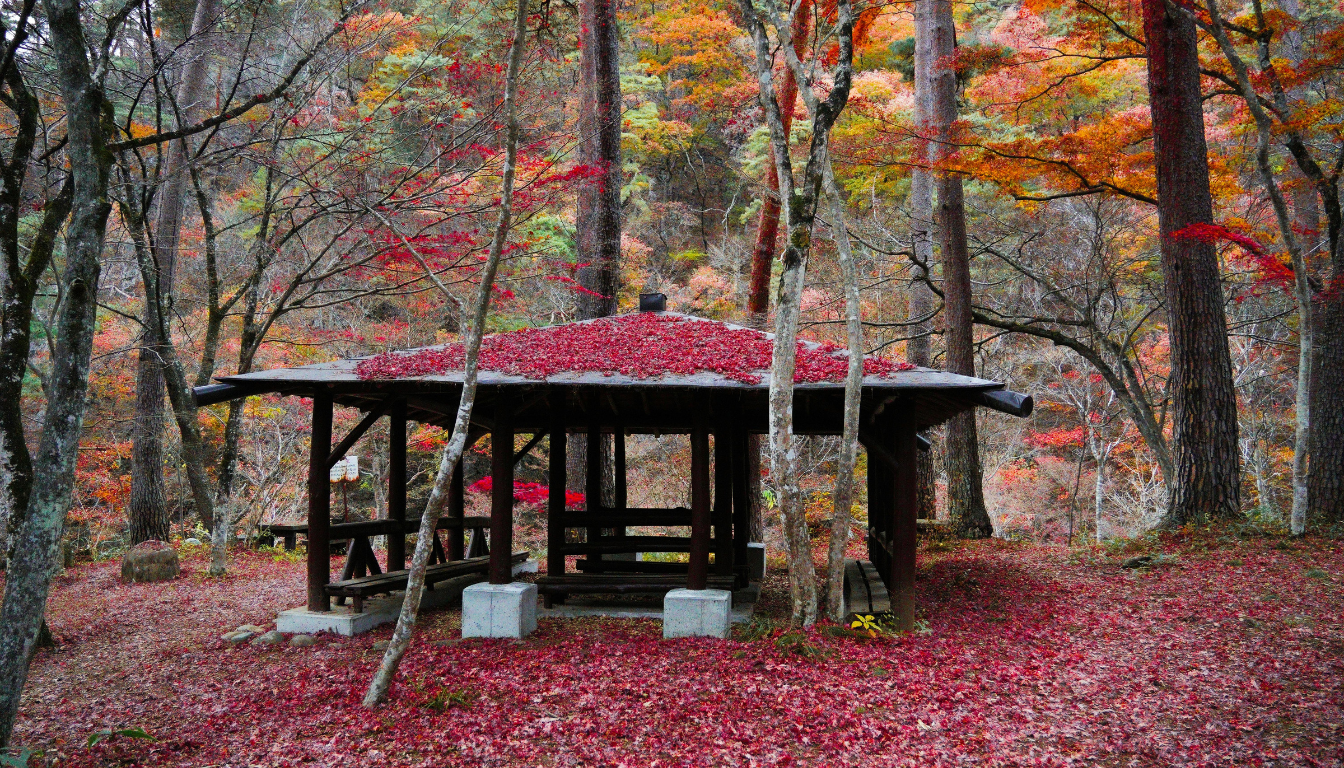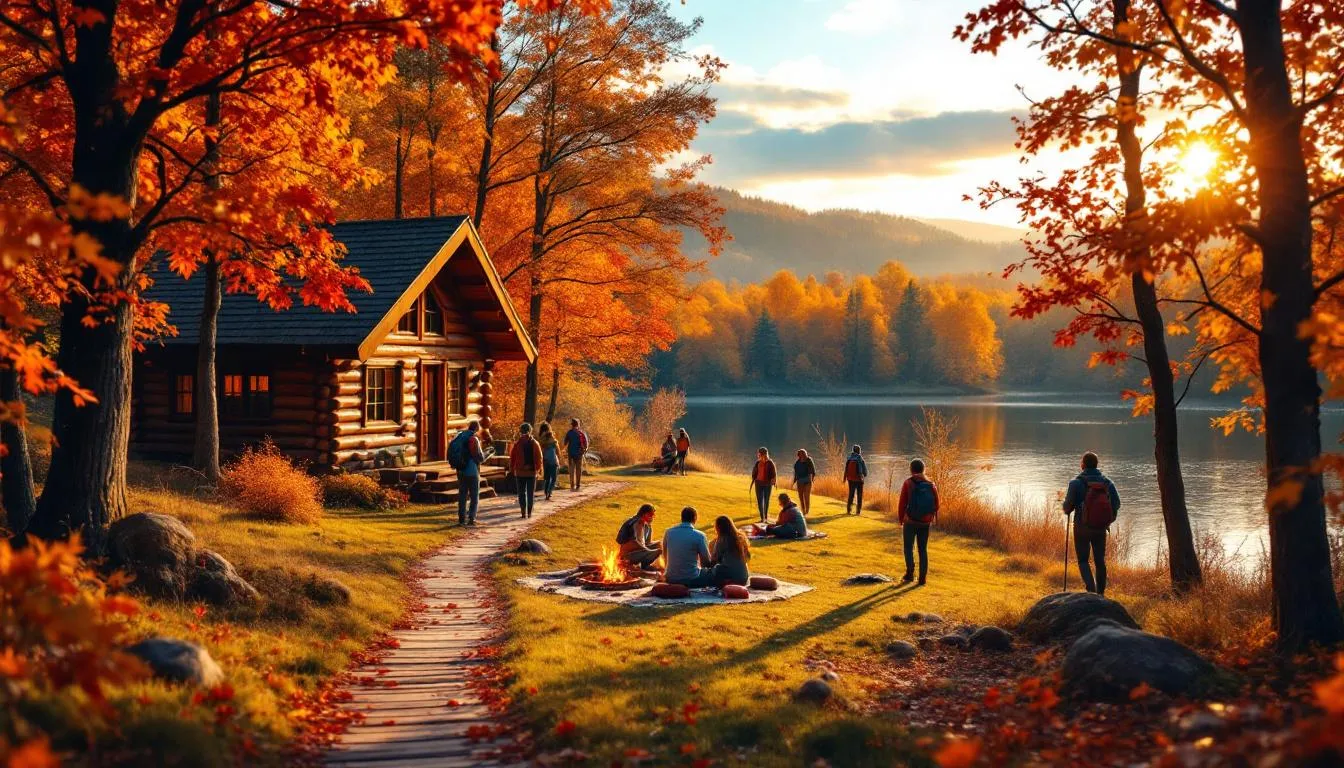The Best Season for Team Building Retreat: When to Plan Your Getaway

Choosing the best season for team building retreat can make a big difference in its success. This article will help you understand how spring, summer, autumn, and winter each offer unique benefits and challenges for your corporate getaway.
Key Takeaways
- Seasonal timing significantly impacts the effectiveness and enjoyment of corporate retreats, with spring and autumn regarded as ideal for maximum attendance and engagement.
- Budgeting for retreats should consider seasonal factors, as off-peak times can lead to significant savings on venues and activities, sometimes reaching up to 30-40%.
- Aligning retreat goals with the strengths of each season can enhance team dynamics, productivity, and overall success, as demonstrated in various case studies.
Understanding Seasonal Impacts on Team Building Retreats

When it comes to planning a corporate retreat, the weather plays a significant role. Many organizers prioritize weather conditions to ensure the success of their events. The seasonal timing can dictate the types of activities available; for instance, summer is perfect for outdoor adventures, while winter might focus on cozy indoor experiences. Understanding these seasonal impacts is crucial for effective corporate retreat planning.
Choosing the right time of year for a retreat is important as timing significantly impacts the event’s effectiveness and enjoyment. Consider the following when scheduling your retreat:
- Schedule the retreat well in advance to ensure maximum attendance and avoid conflicts with busy schedules.
- Choose spring or autumn, as these seasons are particularly favorable.
- Avoid major holidays or vacation times to maximize participation.
Moreover, the psychological benefits of corporate retreats, such as building trust, reducing stress, and promoting collaboration, can be maximized by proper timing. Aligning your company retreat with the right season can enhance productivity, motivation, and engagement. Researching local weather trends and understanding the seasonal strengths of your chosen retreat destination can make all the difference.
Spring: A Time for Renewal and Growth
Spring, symbolizing renewal, energy, and growth, is ideal for team-building retreats. The sense of renewed energy in spring can enhance a positive and productive atmosphere, motivating your team to generate fresh ideas and embrace personal growth. Spring is a great time to focus on company values and set new year goals for the year ahead.
Mild temperatures and longer daylight hours in spring lead to lower chances of bad weather, making outdoor activities more feasible. The flexibility of spring allows for a variety of team-building events throughout the day. Using spring themes, décor, and menu options can create a motivational environment and further inspire your team.
Spring, falling between winter holidays and summer vacations, typically offers better availability for guests and vendors. This means you can plan your retreat during the company’s slow season, reducing work-related distractions and enhancing employee engagement. Companies that schedule their retreats in the second half of spring, such as May and June, often find it easier to create a memorable and effective retreat experience.
Summer: Balancing Benefits and Challenges

Summer retreats offer a great opportunity for team members to engage in outdoor activities, promoting health and well-being. The relaxed atmosphere of a summer retreat can enhance team bonding, fostering meaningful connections among employees. This season is perfect for outdoor adventures, which can facilitate innovative thinking by breaking away from the usual work environment.
However, summer retreats come with their own set of challenges:
- Vacation conflicts, as many employees may take time off during this peak travel season.
- Heat waves and high humidity, which can cause discomfort and make it essential to choose locations that help escape the heat.
- Crowded venues and high travel costs due to peak tourist season.
To navigate these challenges, consider planning indoor events with air conditioning, such as leadership workshops and creative breakout sessions. Locations that offer a mix of indoor and outdoor activities can provide an ideal setting for your summer retreat, ensuring that your team feels comfortable and engaged despite the seasonal challenges.
Autumn: Harnessing the Energy of a New Season
Autumn is a season that brings a sense of calm and reflection, making it a perfect time for team-building retreats. The crisp weather and vibrant leaves provide a stunning backdrop for outdoor activities, which can significantly enhance creativity, morale, and communication among team members. Engaging in nature during autumn can lower stress levels and improve concentration.
The calm atmosphere of fall encourages bonding and productivity without the distractions of major holidays or summer vacations. Locations that blend scenic beauty with team-building opportunities can maximize the impact of your autumn retreat. This season offers a great balance between the outdoor adventures of summer and the cozy indoor experiences of winter, making it a fantastic time for many companies.
Planning your retreat during this slow season allows you to take advantage of off-season rates and better availability, ensuring a successful and cost-effective experience. Autumn retreats provide a unique opportunity to harness the energy of a new season, setting the stage for renewed focus and collaboration within your team.
Winter: Cozy Retreats and Unique Experiences

Winter retreats provide a unique chance for teams to bond over cozy indoor activities and unique experiences. Local venues with indoor pools or fireplaces can significantly enhance the winter retreat experience, offering a comfortable and inviting atmosphere. Activities like spa days, fireside chats, and wine tasting can create memorable and effective corporate retreats.
Planning outdoor activities in winter can include group experiences such as winter hikes and snow tubing, which can be both exhilarating and team-building. However, it’s important to consider potential risks like travel delays and harsh weather conditions, which can impact the overall success of your retreat. Having backup plans, planned activities, and flexible scheduling can help mitigate these risks, especially when planning activities effectively.
Hosting retreats during winter, especially outside of the holiday rush, allows for lower costs and more favorable financial terms. Many venues offer off-season discounts, making it a cost-effective time for retreat planning. Aligning your retreat goals with winter’s cozy and reflective nature can create a successful and memorable experience.
Aligning Retreat Goals with Seasonal Strengths
Aligning your retreat goals with the strengths of each season can enhance the overall impact of your event. For example, winter’s tranquil environment allows for enhanced focus on team goals and personal development. Spring’s mild weather and renewed energy can inspire new ideas and foster personal growth through goal setting.
Selecting a season that aligns with natural abundance can minimize resource strain during retreats. For instance, planning retreats in late fall or early spring can offer significant savings on accommodation and venue rentals due to off-peak demand. Weekdays are generally less expensive for booking retreats compared to weekends, as demand is lower.
Considering seasonal strengths and aligning them with your retreat goals can create a more focused and successful experience. Whether you’re aiming to boost team morale, enhance collaboration, or set new company goals, achieving early wins with the right timing can make all the difference.
Budget Considerations by Season
Budget considerations are crucial when planning a corporate retreat, and the season you choose can significantly impact your costs. Booking during off-peak seasons can lead to substantial cost savings for venues and activities, sometimes reaching up to 30-40%. Understanding the time of year when corporate retreats are most expensive can guide better budgeting decisions.
Summer is often associated with higher costs for venues and travel, making budget considerations crucial for retreat planning. Transportation can constitute 15-25% of the overall retreat budget, significantly impacting total expenses. Accommodation tends to be the largest expense, covering 25-35% of the total budget for retreats.
Hidden costs such as insurance, technology needs, and local taxes can inflate the retreat budget unexpectedly. By planning ahead and choosing venues in shoulder seasons, you can take advantage of better rates and more pleasant weather. Careful planning and budgeting can ensure a successful and cost-effective planned retreat experience for your team.
Location Selection Based on Season
Selecting the right location for your retreat is critical, with the season playing a significant role in this decision. The success of a retreat greatly depends on the seasonal strengths of the chosen location. For example, a remote, nature-focused setting like the Catskills can provide a serene and inspiring environment for your team.
Many venues offer special corporate event packages that include additional perks not publicly advertised. Unique locations can inspire creativity and foster stronger team connections during retreats at popular venues. The environment where a retreat takes place can significantly enhance the overall experience for participants.
Using tools like Basejam to find venue availability during the company’s slow season can help you secure the right venue for your retreat. When selecting a location, consider:
- The weather
- Team availability
- Potential costs
These factors allow you to select a location that maximizes the impact of your retreat and aligns with your seasonal goals.
Off-Peak Advantages: Flexibility and Savings
Booking retreats during off-peak times offers several advantages:
- Increases the likelihood of securing desirable venues.
- Allows for better negotiation opportunities with vendors.
- Provides access to premium spaces that may not be available during peak seasons, offering more availability.
- Enables obtaining more favorable financial terms and rates.
Planning during off-peak seasons allows for better negotiation opportunities with vendors, providing access to premium spaces and favorable rates. Taking advantage of off-peak benefits can help create a successful retreat that is both cost-effective and memorable.
Case Studies: Successful Seasonal Retreats

Real-world examples of successful seasonal retreats can provide valuable insights and inspiration for your own retreat planning. A health and wellness startup implemented a team development framework to enhance collaboration after rapid expansion led to decreased performance. This retreat was held during the company’s slow season, allowing for a focused break and effective team-building activities.
An esports organization worked on improving team dynamics and communication to enhance performance in high-stakes competitions. By aligning their retreat goals with the seasonal strengths, they were able to create a successful and impactful retreat experience.
Another example is an agricultural producer who adopted strategic team-building initiatives to combat a 25% drop in employee retention and improve productivity in the business on a high note. Bonus tip: creating a focus on employee engagement and company culture can further enhance these efforts.
These case studies highlight the importance of aligning retreat goals with seasonal strengths and provide practical examples of how businesses have successfully leveraged seasonal retreats to enhance team dynamics and productivity. By learning from these examples, you can create a retreat that is tailored to your company’s needs and goals.
Summary
Choosing the best season for a corporate retreat can greatly impact participation, costs, and overall experience. By understanding the seasonal impacts, aligning retreat goals with seasonal strengths, and considering budget and location factors, you can create a successful and memorable retreat experience for your team.
Whether you opt for the renewal of spring, the outdoor adventures of summer, the calm of autumn, or the coziness of winter, each season offers unique advantages and challenges. Platforms like Offsite can streamline this process by helping teams discover, plan, and manage retreats tailored to their goals, budgets, and seasonal preferences—simplifying logistics and maximizing value across any time of year. By planning ahead and taking advantage of off-peak times, you can ensure a cost-effective and impactful retreat that enhances team dynamics and fosters collaboration.
FAQs
- What is the best season for a corporate retreat?
Spring and autumn are generally considered the best seasons for corporate retreats due to mild weather, fewer scheduling conflicts, and better vendor availability. These seasons also support higher attendance and engagement.
- How does seasonality affect corporate retreat costs?
Retreat costs can vary significantly depending on the season. Booking during off-peak times like late fall, winter (excluding holidays), or early spring can lead to savings of 30–40% on venues and activities. Summer is typically the most expensive due to high travel demand.
- What are the key factors to consider when choosing a retreat season?
Consider weather conditions, team availability, company goals, budget constraints, and potential travel challenges. Matching these with the strengths of a specific season helps ensure retreat success.
- Are there advantages to hosting a retreat during off-peak seasons?
Yes, off-peak retreats offer greater flexibility, lower costs, better venue availability, and more favorable contract terms. These benefits allow companies to host memorable retreats while staying within budget.
You may also like
Unique spaces for your next offsite
Find distinctive venues for your upcoming corporate retreat.
Stay Updated with Our Insights
Get exclusive content and valuable updates directly to you.







